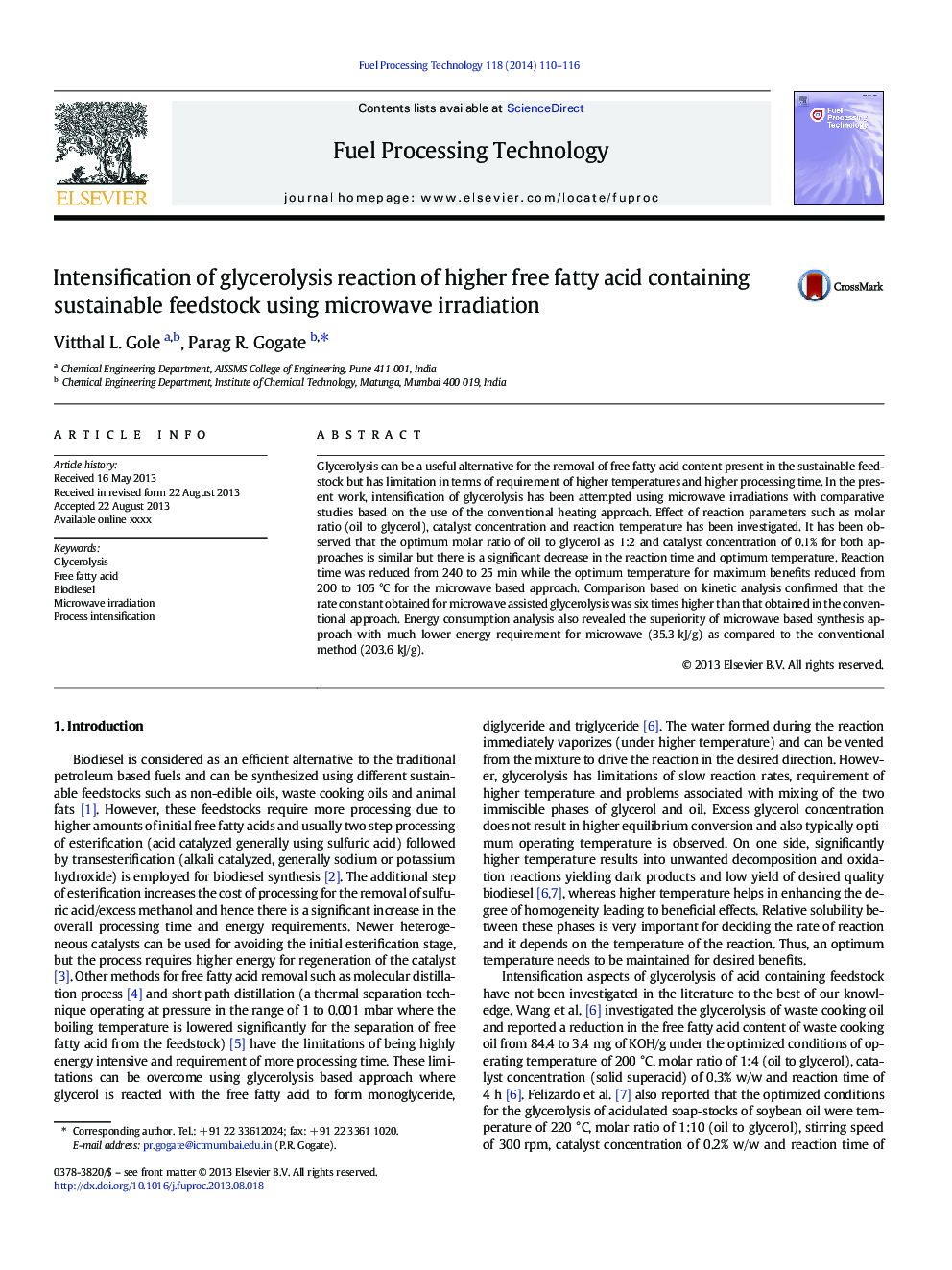| Article ID | Journal | Published Year | Pages | File Type |
|---|---|---|---|---|
| 6657268 | Fuel Processing Technology | 2014 | 7 Pages |
Abstract
Glycerolysis can be a useful alternative for the removal of free fatty acid content present in the sustainable feedstock but has limitation in terms of requirement of higher temperatures and higher processing time. In the present work, intensification of glycerolysis has been attempted using microwave irradiations with comparative studies based on the use of the conventional heating approach. Effect of reaction parameters such as molar ratio (oil to glycerol), catalyst concentration and reaction temperature has been investigated. It has been observed that the optimum molar ratio of oil to glycerol as 1:2 and catalyst concentration of 0.1% for both approaches is similar but there is a significant decrease in the reaction time and optimum temperature. Reaction time was reduced from 240 to 25 min while the optimum temperature for maximum benefits reduced from 200 to 105 °C for the microwave based approach. Comparison based on kinetic analysis confirmed that the rate constant obtained for microwave assisted glycerolysis was six times higher than that obtained in the conventional approach. Energy consumption analysis also revealed the superiority of microwave based synthesis approach with much lower energy requirement for microwave (35.3 kJ/g) as compared to the conventional method (203.6 kJ/g).
Related Topics
Physical Sciences and Engineering
Chemical Engineering
Chemical Engineering (General)
Authors
Vitthal L. Gole, Parag R. Gogate,
